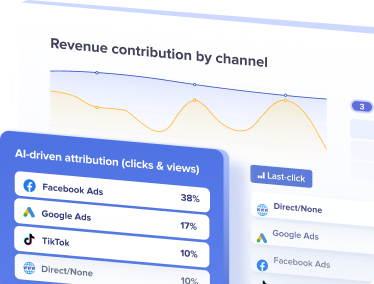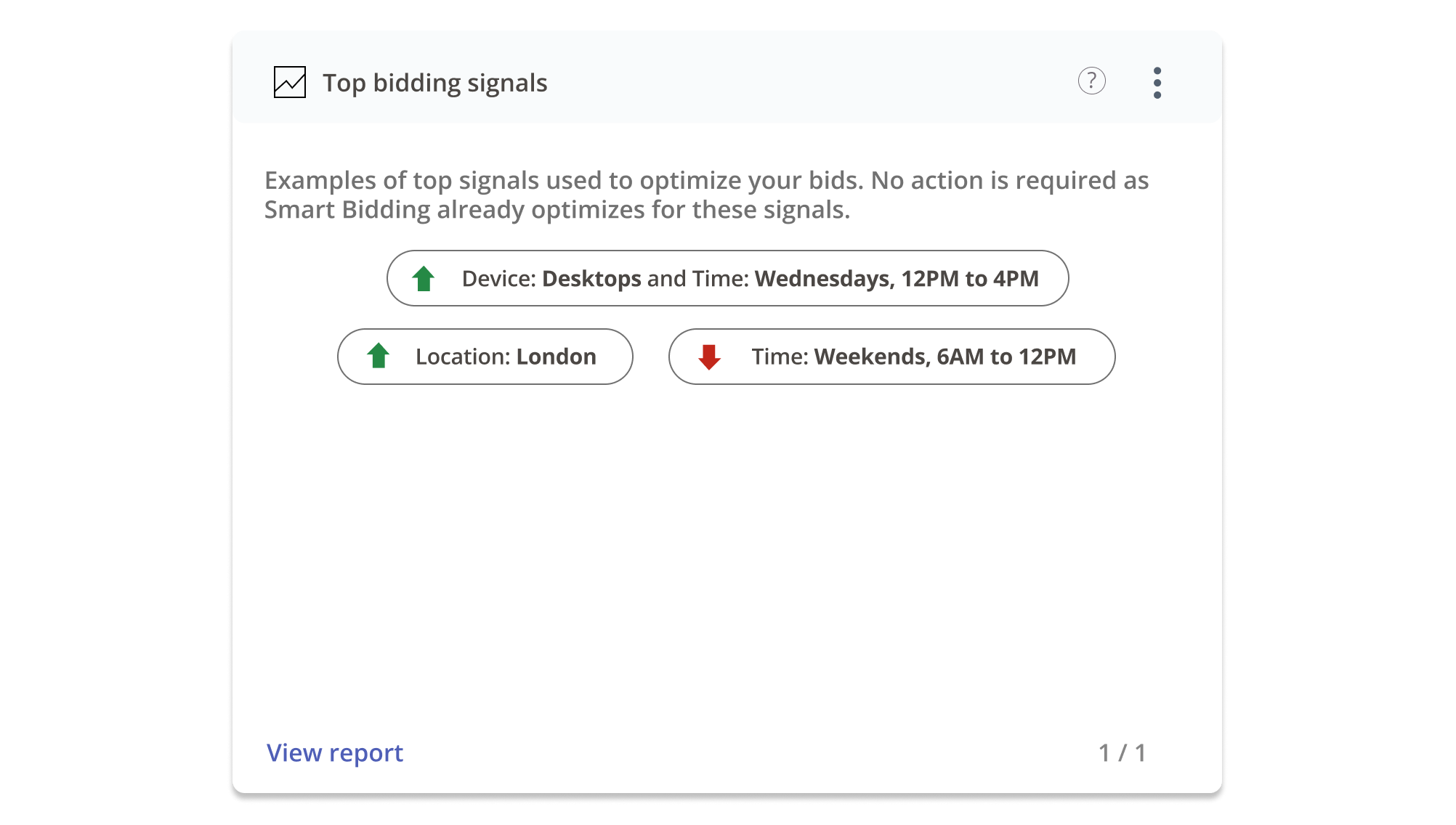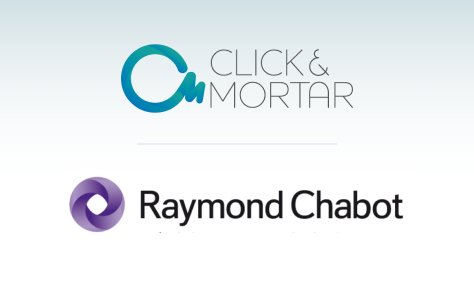Comprehensive guide to Google Ads Performance Max
Google's Performance Max is a new automated Google Ads campaign that uses machine learning to optimise ad delivery, targeting, and bidding for better performance. In this guide, we're exploring how to ensure the maximum performance of PMax campaigns.
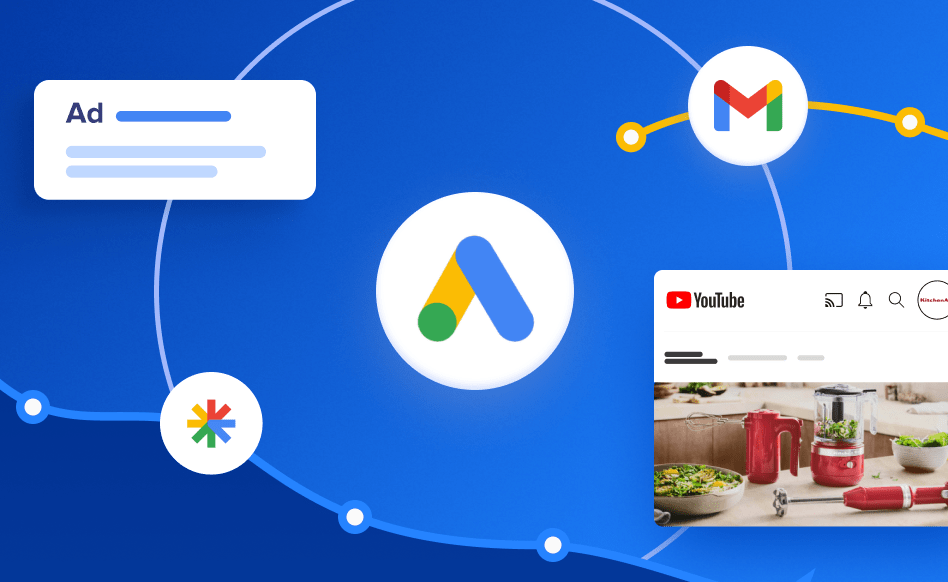
Artificial Intelligence is rapidly taking over the world, and the advertising industry is no exception. Major players in advertising, such as Google, Meta, and TikTok, heavily rely on AI algorithms to deliver relevant ads to the right audience at the right time, ensuring the highest possible performance from an available advertising budget.
A great example of this is the introduction of Performance Max (PMax). Performance Max is a new type of Google Ads campaign that uses AI to drive as many conversions for your business as possible, in a fully automated way.
PMax utilises Machine Learning algorithms to optimise ad delivery, targeting, and bidding. It combines creative assets and chooses optimal ad placement based on data signals, ensuring better performance. There are particular drawbacks as well, such as limited transparency into campaign settings, and a lack of manual-based targeting options.
Understanding the potential advantages, limitations, and challenges of Performance Max campaigns is essential for businesses looking to enhance their advertising strategies.

What are Performance Max campaigns?
Performance Max is an advanced type of Google Ads campaigns that uses Machine Learning algorithms to optimise advertising delivery, in particular targeting and bidding.
This campaign type is highly effective for businesses looking to maximise the performance of their advertising campaigns. One of its key features is its ability to automatically combine creative from provided assets such as text, image, and video, and then choose the optimal ad placement based on a range of data signals.
Since Performance Max campaigns use Machine Learning, they rely heavily on feedback signals to determine the quality of the traffic. This means that the algorithms analyse user behaviour, location, device, and other data to determine the most effective way to reach and engage the target audience.
The campaign is particularly effective for businesses if they can:
- provide many conversion signals for the algorithm to learn;
- provide the feedback signals as soon as possible;
- assign proper value to each conversion signal to distinguish valuable clicks and users from non-valuable ones. If your conversion signal is Purchase, you need to pass the transaction value with each purchase.
Performance Max uses a range of placements across various channels such as YouTube, Display, Search, Discover, Gmail, and Google Maps. This helps to increase the user’s awareness and intent to convert in the future, even if the current session doesn’t end with a conversion. This multi-channel approach enables businesses to reach their target audience in multiple ways and provides multiple touchpoints that can increase the likelihood of conversion.

In conclusion, Performance Max campaigns are a powerful tool for businesses looking to maximise the performance of their advertising campaigns. With their Machine Learning algorithms, multi-channel approach, and automated optimisation of ad delivery, these campaigns can help businesses reach their target audience in a more efficient way.
While there are some limitations to be aware of, the benefits of Performance Max campaigns make them a valuable addition to any advertising strategy.
Pros and cons of Performance Max campaigns for businesses
Pros
1. Automatic optimisation of ad delivery
By leveraging Machine Learning algorithms, Performance Max campaigns can automatically optimise ad targeting and delivery based on the advertiser’s goals. The algorithms use a wide range of data signals, such as user behaviour, location, device, etc. to identify the best placement of each ad and the most relevant message for the audience. This helps to improve overall campaign performance and increase ROI.
In addition to this, such campaigns minimise costs by delivering the most effective combination of bids and targeting.
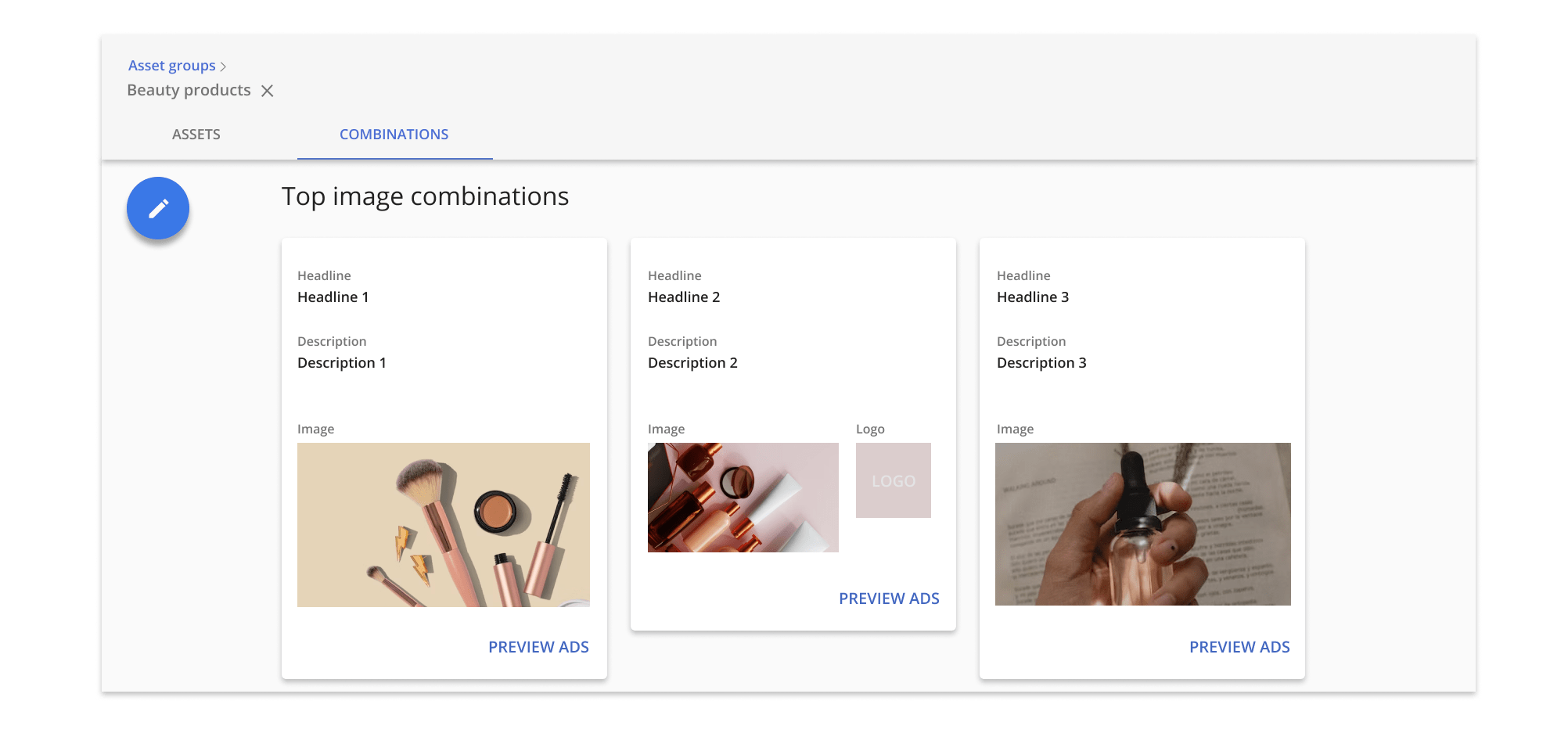
2. Control over goal achievement
With PMax campaigns, businesses have more control over their goals and can achieve them faster and with less spending. The Machine Learning algorithm will constantly analyse the advertising performance and determine the best set of bids and targeting and will help achieve the goal.
3. Wide variety of goals
Performance Max campaigns are flexible and can be used to achieve a wide range of goals, such as driving sales, generating leads, increasing website traffic, etc. Businesses only have to pick the most suitable goal and see PMax achieve it over time.
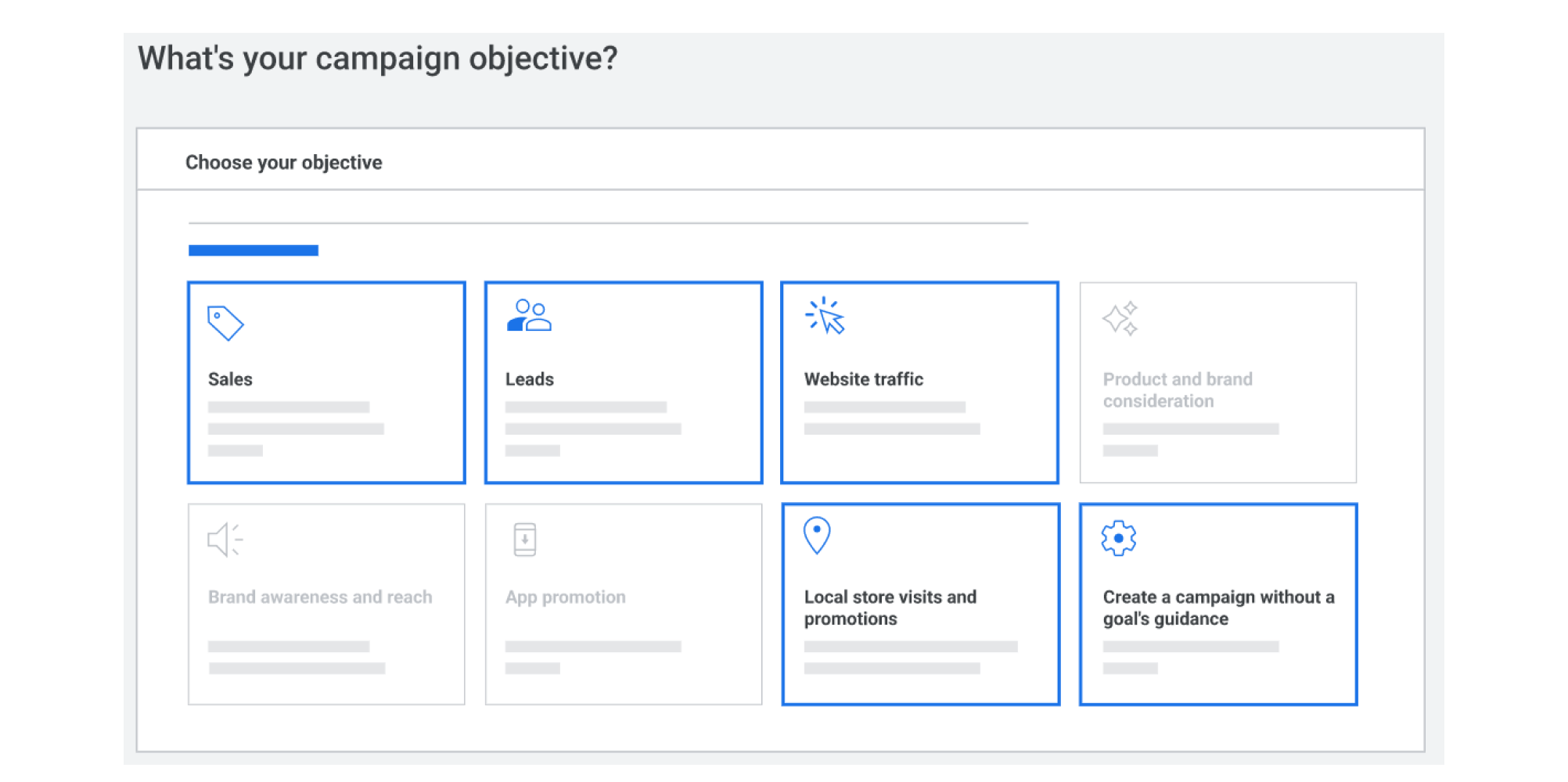 Note: You can choose Performance Max as a campaign type if you pick one of the highlighted goals.
Note: You can choose Performance Max as a campaign type if you pick one of the highlighted goals.
4. Easy campaign management
As ad targeting and bidding are managed automatically by the Machine Learning algorithm in Performance Max campaigns, the whole campaign management process is way easier. It also saves lots of time and effort that otherwise would be spent on manual optimisation.
Cons
1. Heavy reliance on feedback signals
Performance Max campaigns are based on Machine Learning algorithms, which, in turn, rely heavily on the feedback loop to learn and adjust auto-targeting and bidding.
While this approach can be very effective, it can also result in missed opportunities and lost revenue if the feedback signals are inaccurate, incomplete, or delayed.
Cross-device journeys, tracking restrictions, and cookie use limitations make observing the customer journey impossible, which affects the ability to attribute conversions and value accurately.
As a result, the PMax campaign may miss a significant portion of feedback signals, which can negatively impact its performance.
2. Lack of transparency and control
Because Performance Max campaigns use complex Machine Learning algorithms to optimise ad delivery, it can be difficult for businesses to understand exactly how their ads are being targeted. This lack of transparency may make it more difficult to fine-tune the campaigns.
Also, these campaigns are automated and completely black-box meaning that businesses have limited control over the targeting and any other aspect of the campaign. The only things they can set are a performance goal and a budget.
3. Limited insights
Compared to other campaign types, such as Shopping or Search, PMax doesn’t provide many insights into converting keywords. It only shows “top signals” for conversions, which are usually tightly related to the brand name.
Common challenges with Performance Max campaigns
Today, there are several challenges that affect all marketing and advertising activities in one way or another.
First, privacy regulations, cookie use limitations, and tracking restrictions make it impossible to observe the whole customer journey. The Internet is moving towards providing every user with a privacy-centric experience, which inevitably leads to a lack of customer data in the marketing space.
Second, all described above affects marketing attribution. As a result, PMax campaigns are usually undervalued because they get no credit for the conversion that has eventually happened.
Now, let’s see what challenges these complications create for Performance Max campaigns.
Not enough feedback signals
One of the main challenges with Performance Max campaigns is providing the algorithms with a sufficient number of feedback signals.
This is a huge challenge, especially for companies that have longer sales cycles. For example, e-commerce brands that sell high-value products, or lead-gen focused businesses that promote financial services, educational courses, B2B products, and so on. These companies simply cannot provide enough conversions for the algorithm to train on.
However, even if your business has enough conversions to train the AI algorithms of Google, you may still be missing a lot of potential revenue, as typically conversion rate is around 1-3%. This means that you don’t provide any value signal on 97-99% of your clicks, which limits the learning and training process of Performance Max campaigns.
Quality of the feedback signals
The next challenge is the quality of the feedback signals — if it’s enough of them already it’s good, but the quality matters no less.
While purchases are often the final goal for e-commerce brands, for lead generation businesses it is not. Leads that complete a form on a website may end up being disqualified during the sales process. Getting as many sales-qualified leads, opportunities, or deals is the primary goal for such companies.
However, uploading offline CRM-based conversions to Google Ads can lower the number of signals, even though Google algorithms heavily rely on them. Therefore, it’s important to balance the number of signals with the quality of those signals to ensure that the Performance Max campaign is receiving accurate feedback.
How to ensure the maximum performance of PMax?
Here are general recommendations on how to ensure that you get maximum value from using Performance Max campaigns.
Use a variety of assets
One of the critical elements is to use a wide range of assets that includes not just text, but also images, videos, and other media types. By incorporating various assets, you can increase your chances of engaging your audience and improving your click-through rate.
Avoid ad creative fatigue
Ad fatigue can occur when the same ad creative is displayed repeatedly to the same audience, leading to a decline in performance.
Make sure that your ad creative meets high standards and is refreshed regularly to avoid ad fatigue. For example, try rotating your ad creative regularly to keep your audience engaged.
Monitor product feed
If you’ve linked your Merchant Center account, make sure that your product feed is accurate, up to date, and meets all of Google’s requirements. It’s essential to ensure that your product information is correct and your data quality is high.

By doing so, you can help Google’s algorithms better understand your products, which can help increase the performance of your PMax campaigns.
Send as many feedback signals for algorithms to learn as possible
Finally, make sure you provide lots of high-quality feedback signals to your PMax campaigns as quickly as you can. This will enable Google’s algorithms to better understand your target audience and serve your ads to the right people at the right time.
How to provide more conversion signals to improve PMax performance
One way you could boost the amount of high-quality feedback signals is to use Conversion Modelling technology developed by SegmentStream.
Conversion Modelling uses the power of AI and first-party data to evaluate each website session in real-time and calculate the incremental value of each website visit, even if the real conversion cannot be observed due to cookie tracking restrictions or long customer journeys.
The incremental value is calculated based on Conversion Probability as well as Predicted Conversion Value for each website visitor. If the incremental value is high enough, SegmentStream creates a Modelled Conversion which can be used as a feedback signal for ad platforms.
In the case of Performance Max campaigns, which strongly depend on many quality feedback signals, SegmentStream is a perfect solution for all challenges that this type of ads faces.
By designating Modelled Conversions as a primary conversion alongside the actual conversions from the website, businesses can provide significantly more feedback signals to PMax algorithms. This, in turn, will enhance the overall efficiency of the campaigns.
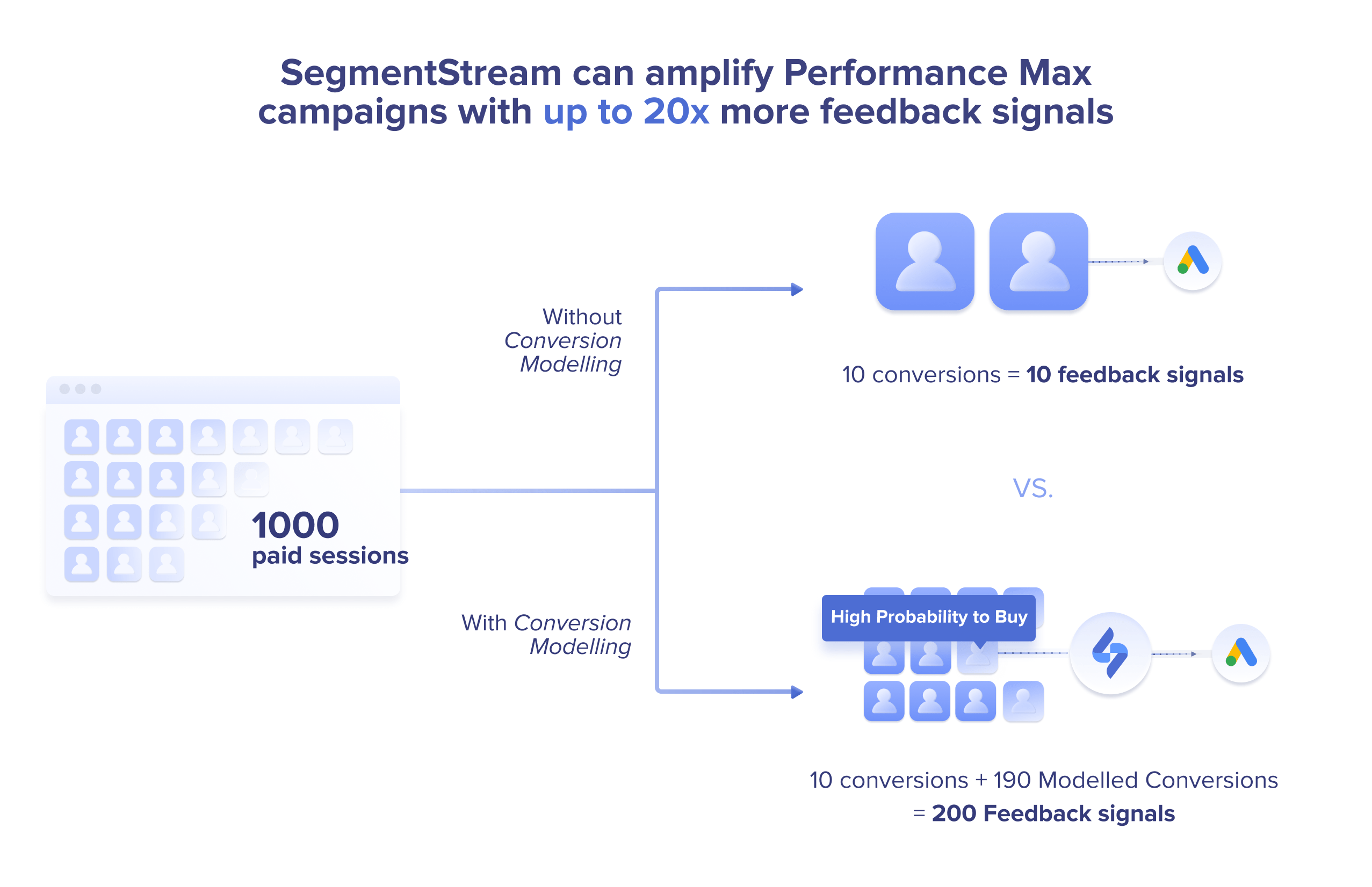
When running PMax campaigns, we suggest using a Cascade Value Optimisation approach. It works both for e-commerce and lead-generating companies.
Let’s see how it works for lead-oriented businesses
How to drive more leads from Performance Max using Cascade Value Optimisation
Instead of optimising campaigns towards one conversion goal, such as Lead, create a cascade of different conversions and differentiate them by value:
- Modelled Conversions, or website sessions that show a high probability to convert with a calculated monetary value. This is the biggest pool of users, but individually they carry low value. Their predicted value, on a linear scale, depends on the conversion probability;
- Website leads with mid-value;
- Qualified leads from CRM. This is the smallest pool of users, but each has a high value.
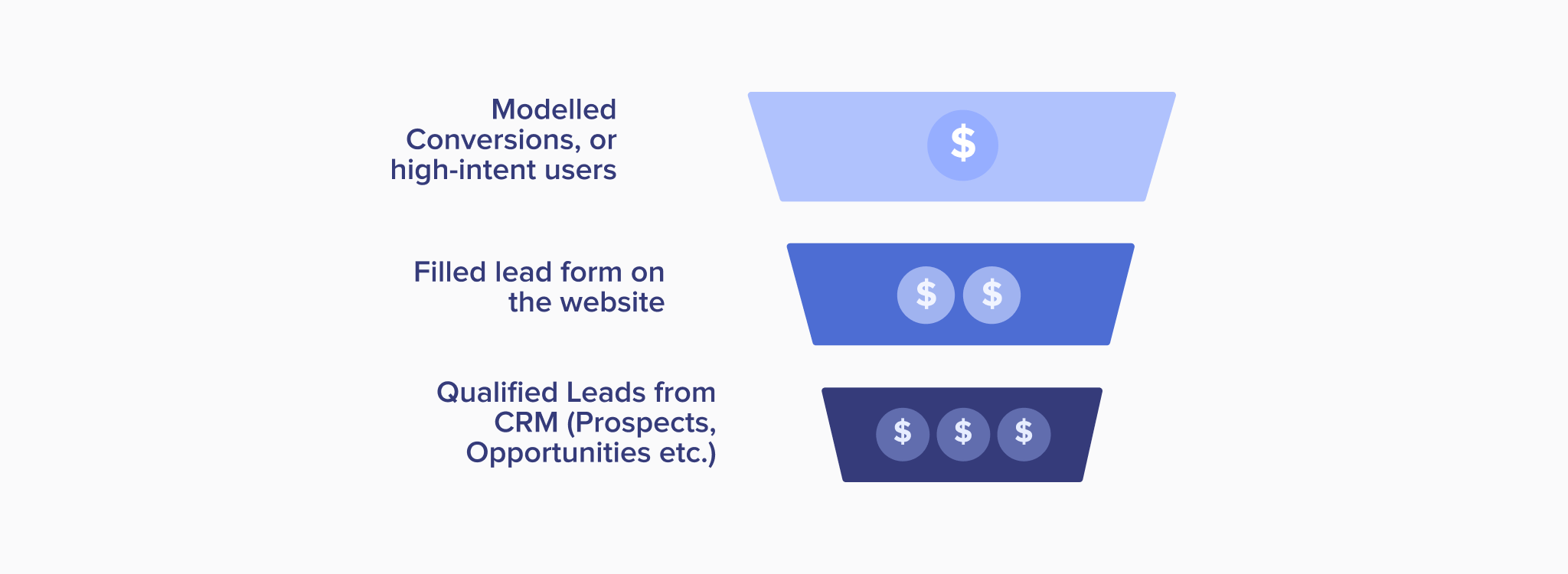
Modelled Conversions can be sent to Google Ads as a primary conversion directly from the SegmentStream interface.
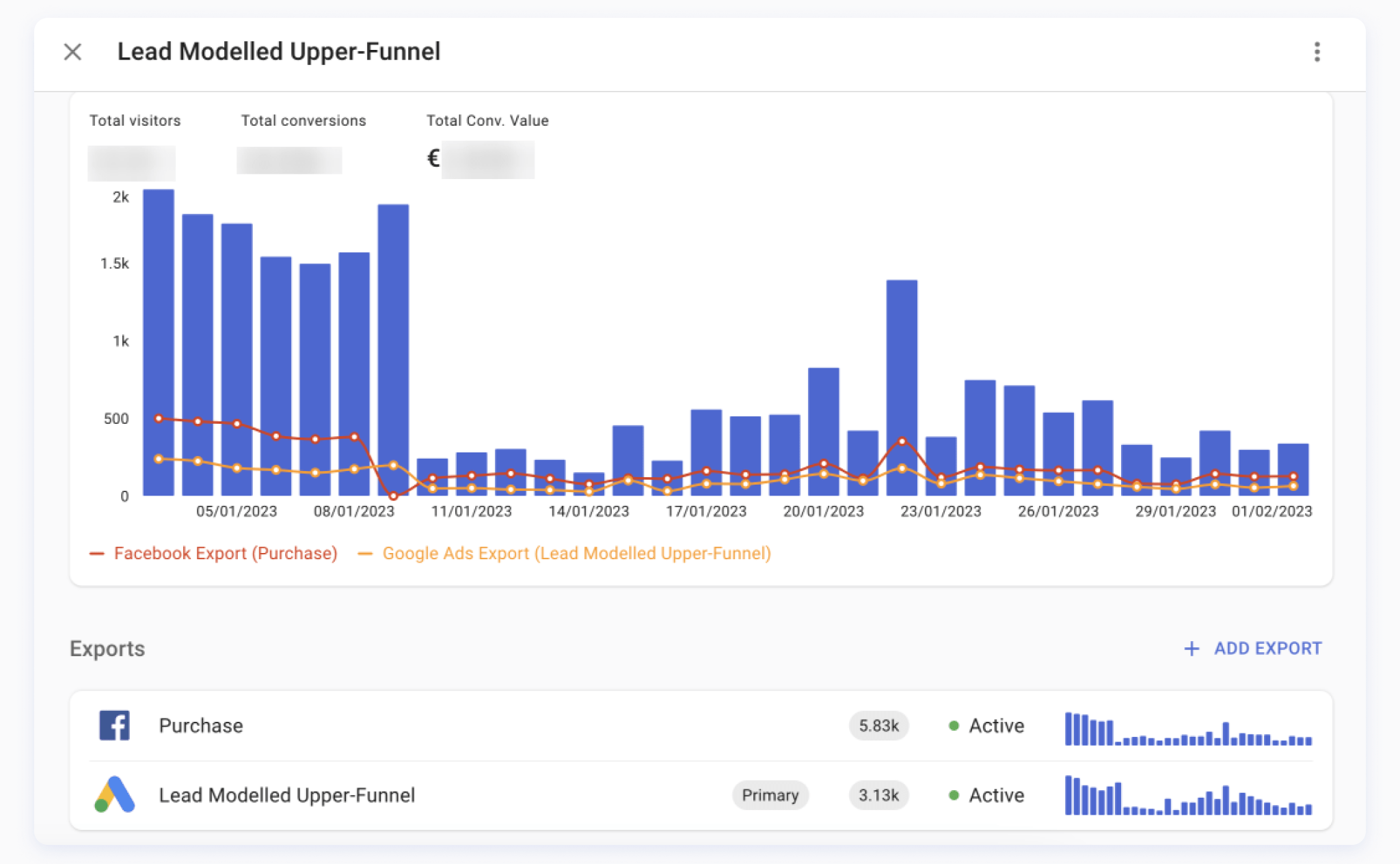
Even for lead generation businesses, we recommend using the Maximise Value strategy, as in our Cascade each conversion already has an assigned value. This allows us to prioritise conversions while maintaining their relevancy.
Example: We manually assign a value of $100 to a sales-qualified lead (SQL), and $50 to a website lead. If SegmentStream predicts that a user is likely to become a website lead, the value of the Modelled Conversion can be in a range from 0 to $50. Those numbers are arbitrary, and you can choose the value yourself, depending on how valuable each lead is for your business.
Let’s say a user came to the website from a Performance Max campaign, did a lot of research, but did not fill in a lead generation form. The user seemed to show a lot of interest in your product, however, the ML model might predict a $40 value.
This way, we have a Cascade of 3 conversions:
- SQL with $100 value,
- Website lead with $50 value,
- Modelled Conversion with $40 value.
All these signals are sent to Google Ads. Combined with the Maximise Value strategy, SQL will be prioritised, followed by website lead and Modelled Conversion.
+15% revenue from Performance Max campaigns — how SegmentStream powered up advertising for KitchenAid
SegmentStream optimisation for e-commerce businesses would follow the same approach as described above, however, the Cascade would typically contain two conversion actions:
- Real Purchases with the actual transaction value associated
- Modelled Conversions, with the predicted value depending on the probability to convert and predicted conversions value.
Let’s see how this approach worked in the KitchenAid case.

An American brand of premium home appliances, approached SegmentStream to assist in optimising PMax campaigns for better performance. As these ads rely heavily on conversion signals to optimise bidding and targeting algorithms, the more signals it gets the easier it is to enhance campaign performance.
However, due to the nature of the business, KitchenAid has fewer but more expensive conversions on its website, limiting the feedback necessary for efficient ad platform targeting and optimisation. This has resulted in a significant loss of potential sales revenue for KitchenAid.
To help KitchenAid overcome this challenge and finally feed enough feedback signals to Google Ads, SegmentStream’s Conversion Modelling Platform assessed website visits in real time. Then, it measured users’ probability to convert in the future and created Modelled Conversions when the probability was high enough.
The imported Modelled Conversions were used by the ad platforms as feedback signals, as well as helped KitchenAid to understand which channels generated the most valuable traffic to their website.
This solution resulted in a 15% increase in revenue and ROAS in Performance Max campaigns. For other positive results, read the full case study.
Summary
The importance of AI in the advertising industry cannot be overstated, and major players like Google use Machine Learning algorithms to deliver relevant ads to the right audience. One of the newest examples of this statement is the introduction of Performance Max campaigns in Google Ads.
Since PMax heavily relies on feedback signals to learn and adjust its targeting and bidding, it is essential to provide ad platforms with timely and accurate data feedback about the true value of each click.
However, complex customer journeys and the rise of cookie tracking restrictions make it difficult for advertisers to provide ad platforms with accurate information on valuable clicks, hindering the effective training of AI algorithms.
This has led to the emergence of ad tech startups like SegmentStream, which provide better insights on valuable clicks using Conversion Modeling technology to train AI algorithms. As a result, brands see a higher ROAS from Performance Max campaigns if they use such tools as Conversion Modelling.
If you’d like to learn more about how SegmentStream can drive better results for your Performance Max campaigns, feel free to request a demo of Conversion Modelling Platform.
Optimal marketing
Achieve the most optimal marketing mix with SegmentStream
Talk to expert